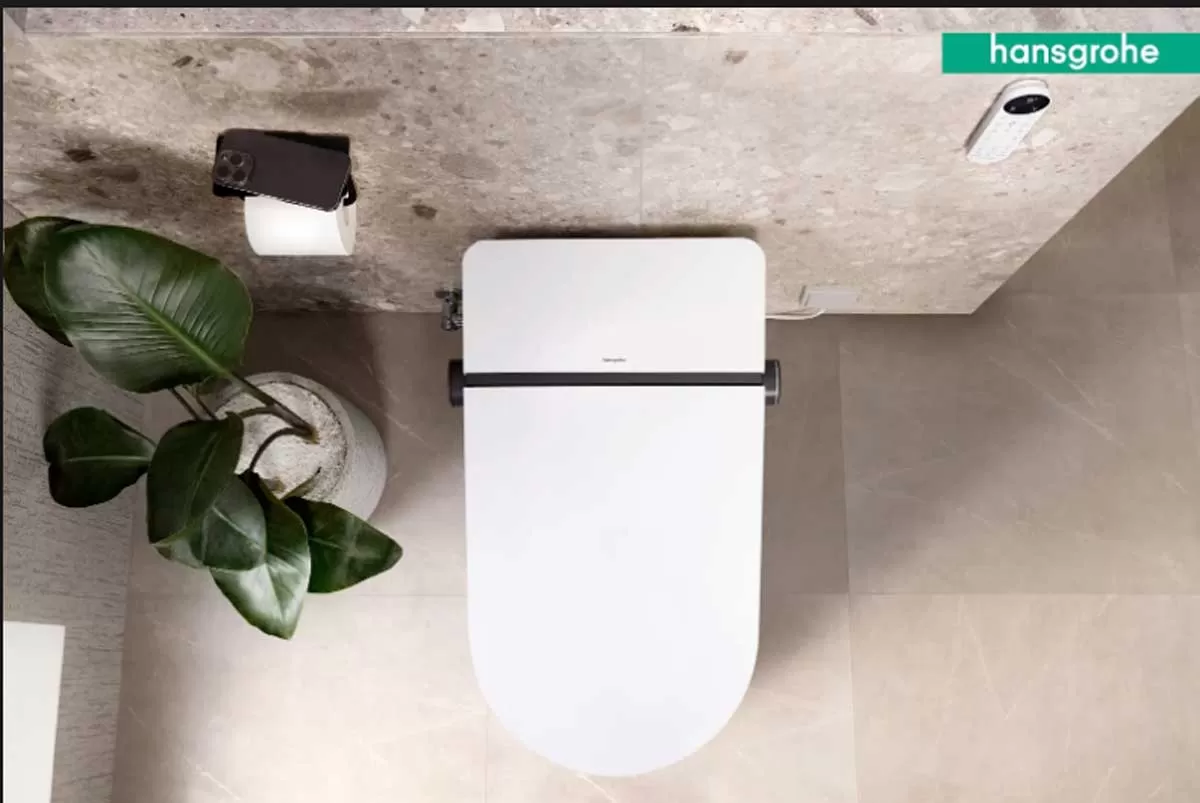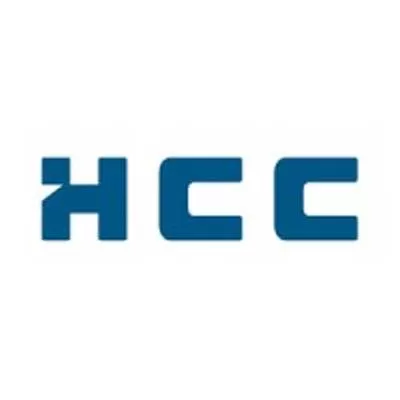Indian HVAC industry: Policy tweaks crucial to drive growth
01 Feb 2018
13 Min Read
CW Staff
The Indian HVAC market is worth around Rs 21,000 crore with products alone contributing Rs 15,000 crore, reckons <span style="font-weight: bold;">Guru Raja Rao Gangaprasad, Vice President-Sales (Building Services), Grundfos Pumps India.</span>
<p></p>
<p>Growing at a CAGR of 15-18 per cent,<span style="font-weight: bold;"> Kanwaljeet Jawa, Managing Director & CEO, Daikin India, </span>expects the market as a whole to touch Rs 23,816 crore by 2020. 'While India saw major economic changes last year, the residential and light commercial segment, which makes up more than two-third of the HVAC market, was relatively less impacted by policy and taxation changes,' observes <span style="font-weight: bold;">Chirag Baijal, Director-Commercial HVAC Businesses, UTC Climate, Controls & Security.</span> 'We continued to see good growth in orders and exited the year with a robust backlog for 2018 and beyond.'</p>
<p>Essentially, with barely 5 per cent penetration of HVAC and most of India facing climatic conditions that necessitate conditioning, especially in summer, and most new buildings being designed as air-tight structures, the scope for HVAC in India is huge, notes Baijal.</p>
<p>Looking at the commercial air-conditioning segment, <span style="font-weight: bold;">Senthil Thangam, Senior General Manager, Packaged & Central Air-Conditioning Products Division, Blue Star, </span>estimates the market was worth around Rs 3,000 crore in FY2018, and is growing at 7-8 per cent. </p>
<p>Chillers are a key component of air-conditioners. 'The Indian market saw the procurement of around 4,000 chillers of various kinds - reciprocating, scroll, screw, centrifugal and absorption -in 2016-17,' says <span style="font-weight: bold;">KS Vaidyanathan, Head-Marketing & Product Development, Cooling Business, Thermax.</span> 'This translated to an installed capacity of 900,000 refrigeration tonnes worth Rs 1,600 crore, up 5-6 per cent over the previous year.'</p>
<p> <span style="font-weight: bold;">Bright prospects</span><br />
Gangaprasad expects the market to grow at 10-11 per cent, on the back of the implementation of infrastructure projects such as airports and metro rails, high-rise buildings, hospitality projects, IT and ITES parks, and hyper markets. 'Also, Make in India is helping to attract MNCs to set up and expand their manufacturing units, which is boosting demand.'</p>
<p>'Hotels, hospitals, educational institutions and the government are the key sectors contributing to growth; the IT office and builder segments continue to be sluggish,' says Thangam, who expects this trend to persist in FY2019.</p>
<p>'Domestic real-estate construction activity is the biggest driver of the Indian HVAC industry,' says Vaidyanathan. 'Other sectors showing higher than average growth are railways, airports, seaports, healthcare, hospitality and education.'</p>
<p> <span style="font-weight: bold;">What's fuelling HVACs?</span><br />
In the absence of any mandate requiring HVAC owners or customers to invest in the generation of power, most commercial air-conditioning systems today operate on electricity, observes Thangam. 'Electricity is available across the country, cheaper than diesel or another fossil fuel or even solar energy, which also has a space constraint.'</p>
<p>While gas-fired absorption chillers and co-gen systems are viable, India is seeing hardly any movement in this sector because of the lack of long-term gas contracts and fluctuations in gas pricing, says Vaidyanathan. However, he notes that the growing demand for green solutions has boosted the demand for waste-heat recovery and renewable energy solutions to meet spiralling energy demands.</p>
<p>'We are seeing HVAC systems using geothermal, vapour absorption and solar technologies being tested across India, driven by the need to cut power costs and conserve energy, and tide over unreliable power supply,' says Gangaprasad.</p>
<p>UTC has a JV with Toshiba, and these ACs are technologically compatible to run on renewable energy, according to Baijal. However, he notes that commercial acceptance for operating larger capacity ACs on renewable energy is still some time away while Carrier continues to push the envelope with research around cutting-edge technologies for the future. </p>
<p> <span style="font-weight: bold;">Increasingly integrated HVACs</span><br />
Smartness in the context of HVAC can refer to the integration of the systems with other devices, which Gangaprasad says is now more efficient as a result of recent advances in the compatibility of communication protocols between system components. Most HVAC control strategies and integration are based on sensors and smart embedded software that improve system response time by modulating parameters such as temperature, flow rates and pressure.</p>
<p>Smart HVAC systems are now beginning to leverage Internet of Things (IoT) through which the system can be managed from anywhere, offering customers a new paradigm, notes Jawa.</p>
<p>'HVAC systems are increasingly being integrated with devices like smartphones to automate their operations and meet a customer need for remote control,' agrees <span style="font-weight: bold;">Manoj Gaur, Vice President, CREDAI, National, and Managing Director, Gaurs Group. </span>'However, it is essential to retain the option for manual operation so that the occupant can locally manage the parameters.'</p>
<p> <span style="font-weight: bold;">Remote monitoring</span><br />
Intelligent operations in chillers can also refer to the use of the æplant manager û optimiser', a feature that acts as a master controller for system chillers, pumps, cooling tower fans and motorised valves, something Kirloskar Chillers recommends in plants using three or more chillers, says <span style="font-weight: bold;">Gaurang Dabholkar, Associate Vice President, Sales, Kirloskar Chillers. </span></p>
<p> <span style="font-weight: bold;">'Eliminating manual operation </span><br />
in large HVAC systems enables running an optimum plant configuration at ideal load conditions, resulting in 10-20 per cent savings, depending on the plant's annual load profile,' he avers.</p>
<p>Using the Internet to remotely monitor real-time key parameters of chillers, equipped with a communication system, helps reduce downtime, because service experts can recommend predictive maintenance and pre-empt a problem, observes Dabholkar.</p>
<p> 'Even when a breakdown occurs, an engineer can diagnose the fault accurately from the remotely located control centre and arrange appropriate spare parts much earlier than if he were required to visit the site to diagnose the problem and then initiate corrective action.'</p>
<p>HVAC systems that can be remotely managed are preferable, for being easier to manage and service, and hence for their better performance, agrees Gaur. Over the last year, Kirloskar Chillers has been actively promoting remote monitoring of chillers by embedding the communication capability in the controller of every chiller it manufactures, and including remote monitoring in its service package. 'Additionally, we offer retrofits and remote monitoring for our existing chillers under our maintenance contracts,' adds Dabholkar.</p>
<p>Remote monitoring services by Blue Star integrate multiple sites with the central service centre, thereby facilitating the consistent monitoring of the performance of the system. 'Breakdowns in the system are immediately captured by the service centre with the error codes giving the exact nature of the problem, which, in turn, can be passed on to the local service team,' says Thangam. 'Essentially, the response is fast, the turnaround time is shorter, the system uptime is higher, the running cost is optimised, and breakdowns can be avoided with predictive analytical software.'</p>
<p>'Building level automation encompasses the entire electrical systems of a building, not just HVAC, and can cover all the buildings on a campus or around the world, bringing the controls to our doorstep with customised dashboards for each need for analytics, proactive asset and cost management,' says Baijal. Large IT, BFSI and retail companies in India have already started seeing the benefits of this in their premises with a few operating command centres for monitoring.</p>
<p> <span style="font-weight: bold;">Smart ACs win because...</span><br />
HVAC has moved from being a mechanical engineering field to one incorporating electronics as well as automation and data sciences; the latter two components have introduced deep learning in products, notes Baijal.</p>
<p>Developers prefer smart HVACs for the entire package of benefits they offer. 'We prefer smart HVACs for solving problems that traditional systems cannot,' says Varun Juneja, Vice President, Design & Development, ATS Infrastructure. Among these capabilities, he includes the ability to learn the occupant's heating and cooling setting preferences, saving at least 20 per cent on the energy bill, besides lowering the owners' or occupants' carbon footprint, enabling remote access by occupants as well as remote monitoring by service personnel, enhancing fresh air inflow when elevated carbon dioxide levels are detected, and enabling more precise temperature variability (to 0.5¦C as against 1¦C in split or window ACs).</p>
<p>Gangaprasad cites a report commissioned by European agency Bureau d' Information et de PrTvision Economique (BIPE) that found that smart technology can save around 23 per cent of energy in an office building.</p>
<p> <span style="font-weight: bold;">VRV systems score high</span><br />
The falling total life-cycle cost of variable refrigerant flow (VRV) systems is driving growth in the Indian HVAC market, reckons Jawa. 'Essentially, the VRV system is unobtrusive, so it works well in both, new construction and retrofit applications.' High-rise premium apartment projects have been a key driver in the past two years because VRV technology helps developers maximise the amount of space and minimise the mechanical footprint for saleable or leasable square footage, he adds. 'We always prefer centralised VRV air-conditioning systems,' </p>
<p>notes Juneja. 'They consume less electricity by reducing the compressor speed when the load drops, are less noisy, save space, enhance aesthetics by enabling different types of indoor units to be connected to a single outdoor unit and, in general, are easier to install, maintain and use.'</p>
<p>VRV technology can cross over other applications, including schools, hospitals û both of which are key drivers - offices, retail, hotels, etc. Now, the ability to tie the VRV system into building management systems and third-party air-handling units is broadening the application of VRV to meet specific project needs.</p>
<p> <span style="font-weight: bold;">Towards greener refrigerants</span><br />
While HFC 134a is currently the standard refrigerant in chillers, having zero ozone depletion potential, according to Dabholkar, HFC 134a has some (1430) global warming potential. To counter this, Kirloskar Chillers is promoting screw chillers with organic hydro-fluoro-olefin (HFO) refrigerants. As organic refrigerants are yet to come under the regulatory framework and, in India, these cost three to four times more (than HFC 134a) by virtue of being imported, thus slightly increasing the chiller cost. Dabholkar says demand for these genuinely green products in the price-sensitive chiller market is so far limited to discerning customers, but is expected to become increasingly popular over the next few years as regulatory norms are introduced and prices normalise.</p>
<p>The adoption of eco-friendly technologies in lieu of harmful (or damaging) refrigerants is another major demand driver of the HVAC industry, an outcome of the industry's effort to reduce its carbon footprint, observes Vaidyanathan.</p>
<p> New norms: The need of the hour 'As a champion of the cause of sustainable buildings, we welcome regulatory changes that will introduce new technology in the sector, and for furthering industrial growth,' says Baijal. 'India is beginning to see a demand-led revolution in HVAC, driven by customers' preferences on better energy-efficiency and indoor air quality and new norms will only add to this.'</p>
<p>Gangaprasad expects the new BEE norms to encourage manufacturers to introduce new technologies, much needed given that India is committed to reduce carbon emission intensity by 33 per cent from the base level of 2005 by 2030. 'In a price-sensitive market like India, new norms would force manufacturers to look at making more energy-efficient products more affordable,' he says. </p>
<p>The new BEE ratings will instil energy consciousness among consumers; they will want products that bear the stamp of the new rating, according to Jawa.</p>
<p>If the energy-efficiency norms are based on Indian climatic conditions, Thangam observes that these will help consumers make more realistic operating cost calculations, and hence make better decisions. Work has also started on new labelling norms for commercial air-conditioning system components like chillers and VRFs, he notes, which are expected to be formally rolled out in the next one to two years to dramatically change the way consumers buy commercial air-conditioning equipment. Now, that's cool!</p>
<p> <span style="font-weight: bold;">Prospects for Room Air-conditioners</span><br />
The penetration of room air-conditioners (ACs) in India is currently 3-4 per cent versus 30 per cent globally, notes <span style="font-weight: bold;">Kanwaljeet Jawa, Managing Director & CEO, Daikin India, </span>which shows the scope for growth.</p>
<p>Jawa expects demand for room ACs to grow from 4 million units in FY2016 to 7 million in FY2020, at a 15 per cent CAGR, on the back of higher disposable incomes, urbanisation, the year-round usage of ACs and government initiatives such as Make in India, smart cities and Housing for All by 2022.</p>
<p>According to <span style="font-weight: bold;">Manoj Gaur, Vice President, CREDAI, National, and Managing Director, Gaurs Group, HVACs</span> are usually installed only in high-end residential real estate, where standalone room ACs are the norm for meeting a universal buyer's need for economy. 'Installing a centralised AC when the target audience does not prefer it makes the project hard to sell.'</p>
<p> <span style="font-weight: bold;">- CHARU BAHRI</span></p>
<p> To share your views on the market for HVAC in India, write in at feedback@ConstructionWorld.in</p>


















